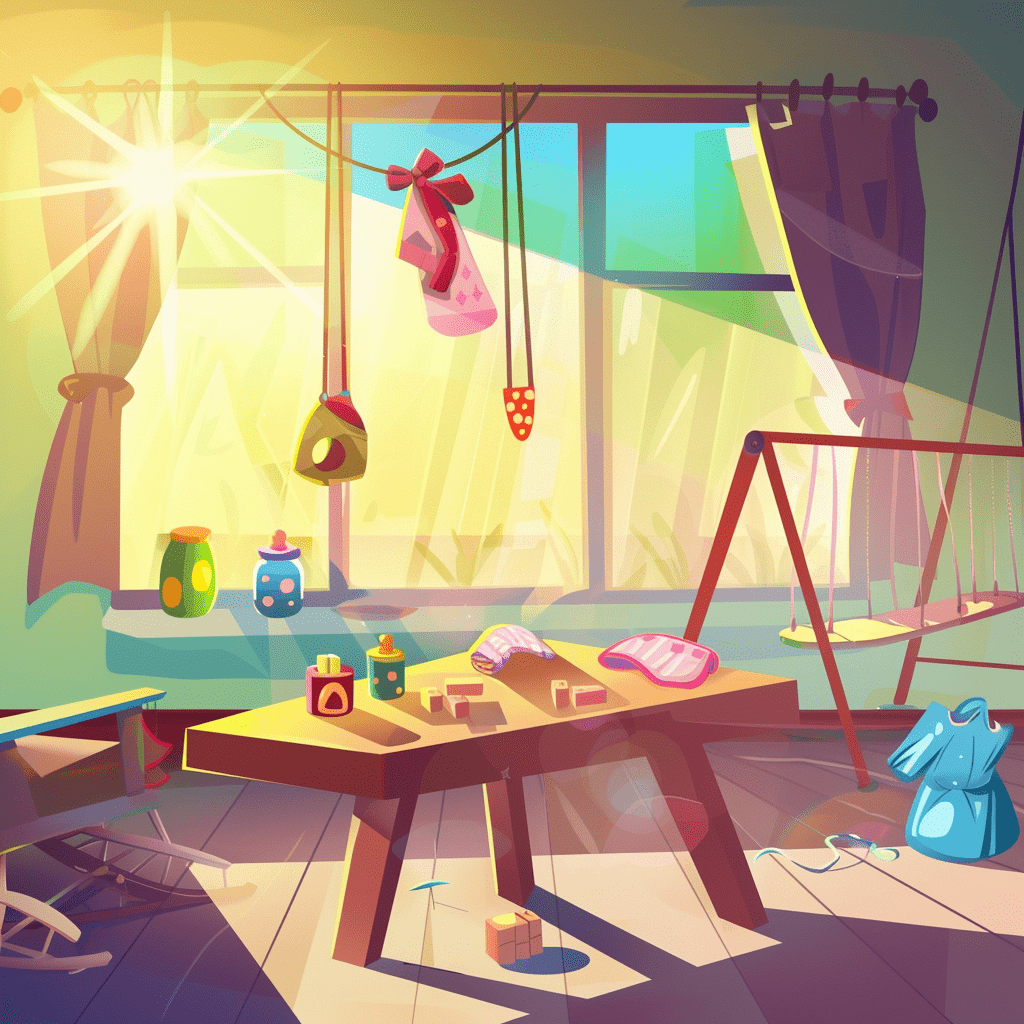Reviewing Old Art Projects

We need to decide what to keep and how to organize our old art projects. Let’s look at their value, sort them by medium, and decide what to do with kids’ art.
Determining Art Project Value
When judging art project value, we consider personal and artistic worth. Personal value might include memories or special events. Artistic value considers skill and creativity.
We ask ourselves:
- Does this project have a special memory attached to it?
- Was a lot of skill and effort put into this piece?
- Can it be used as decor or a gift?
If a project has high personal or artistic value, we keep it. If not, we may choose to discard or repurpose it.
Organizing Art by Medium
Sorting art by medium helps us manage it better. Let’s start by dividing items into categories like paintings, drawings, crafts, and mixed media.
- Paintings may include watercolor paint, oil, and acrylics.
- Drawings cover pencils, charcoal, and crayons.
- Crafts have items like stencils, glitter, and fabric art.
- Mixed media combines various materials.
Use different storage solutions:
- Folders for drawings,
- Bins for crafts,
- Frames for paintings.
Label everything to find projects easily later.
Art Projects for Kids
Kids’ art projects often use simpler materials like crayons and glitter. To assess these, think about:
- Does it capture an important childhood moment?
- Is it a creative standout among their work?
For those we cherish, we might frame or create photo books. Others can be stored in a special box.
Consider repurposing less important pieces for future crafts. Senior family members might enjoy turning kids’ art into new creations during their activities.
By evaluating and sorting our art projects, we can cherish special memories and keep our collections organized.
Upcycling and Repurposing Art Materials

In this section, we will explore ways to reuse old art supplies, create new crafts from recycled items, and practice eco-friendly art.
Creative Reuse of Art Supplies
We can start by reusing materials that we already have. For instance, leftover watercolors can be mixed to create new shades. Broken crayons can be melted down to make multicolored crayon blocks.
Old popsicle sticks are great for building projects like a craft stick airplane. We can also use paper plates to make masks or props, and clothespins can be transformed into mini puppets or figures. Even small items like feathers can add texture to new creations.
DIY Crafts with Recycled Materials
Many everyday items can be turned into fun DIY crafts. For example, empty toilet paper rolls can become pencil holders or small animal figures. Old magazines and newspapers can be cut and glued to create collages.
Using glass jars, we can make colorful lanterns by adding tissue paper and glue. Additionally, we can create jewelry from bottle caps and scrap fabric. This not only helps in recycling but also adds a personal touch to our projects.
Eco-Friendly Art Practices
When crafting, it’s important to consider eco-friendly practices. Using recycled materials reduces waste and sees potential in what others might throw away. We can use biodegradable or non-toxic supplies whenever possible.
Water-based paints are a good choice as they are less harmful to the environment. We should also focus on using all our materials efficiently. By doing so, we can enjoy our creativity while being mindful of our impact on the planet.
Creative reuse, DIY projects, and eco-friendly practices can transform old materials into new and exciting projects. This approach not only sparks creativity but also promotes sustainability.
Gifts and Donations from Art Projects
Turning old art projects into gifts or donations can bring joy to others and give your creations a new purpose. We can create personalized gifts or donate art to community spaces and groups in need.
Creating Gifts from Artwork
We can transform old artwork into unique gifts. For example, photo collages and family trees make great presents during the holiday season.
Crafts for teens and crafts for seniors could include decorating picture frames or making personalized bookmarks. Turning sketches into custom cards for birthdays or special occasions makes the gift even more special.
Old paintings can be cut and repurposed into decorative pieces for the home. This approach not only recycles the materials but also adds a personal touch to the gift, making it more meaningful.
Donating Art to Community Spaces
Another option is donating our art to community spaces. Local libraries, schools, and hospitals often welcome donations.
Community centers can use these pieces to brighten up their walls and create a more welcoming environment. Programs that work with children and seniors might find these donations especially beneficial.
Consider reaching out to nonprofits to find out what type of art they need. Sometimes, courses in arts and crafts for various age groups can use donated artwork as examples or materials. We should clean up and frame the art before donating to ensure it is in good condition.
Art Therapy and Cognitive Benefits
Donating our projects to art therapy programs can provide emotional and cognitive benefits. Art can help reduce anxiety and improve motor skills, making it a valuable tool in therapy sessions.
Programs for those with cognitive impairment can use the artwork as a calming activity. Seniors dealing with memory loss might enjoy crafting sessions, where they can use our old projects as inspiration or materials.
By contributing to these programs, we help bring therapeutic benefits to others, supporting their mental health and overall well-being.
I’m Cartez Augustus, a content creator based in Houston, Texas. Recently, I’ve been delving into different content marketing niches to achieve significant website growth. I enjoy experimenting with AI, SEO, and PPC. Creating content has been an exciting journey, enabling me to connect with individuals who possess a wealth of knowledge in these fields.

